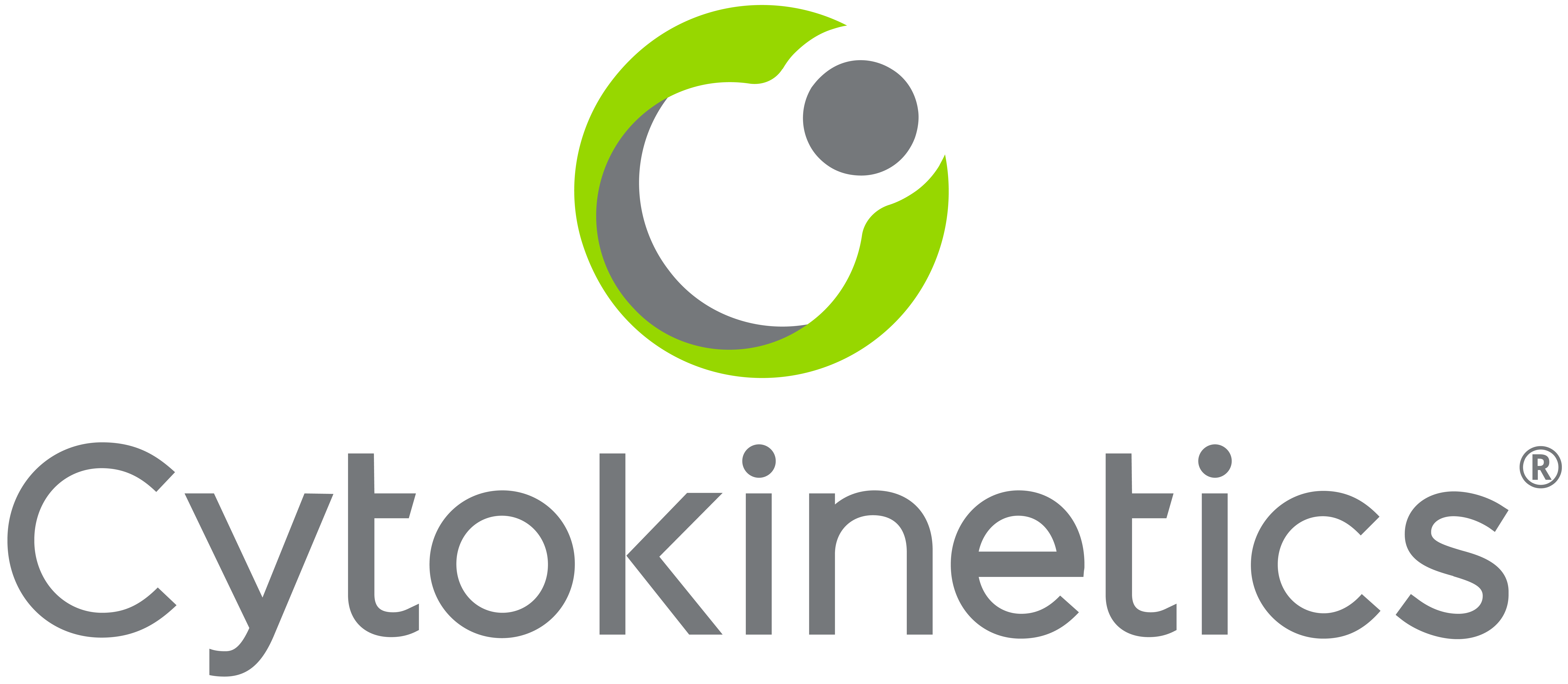Cytokinetics Presents Additional 48-Week Data From FOREST-HCM, the Open Label Extension Clinical Study of Aficamten, at The American College of Cardiology 73ʳᵈ Annual Scientific Session
FOREST-HCM enrolled 213 patients with obstructive HCM from
At Week 48, 75% of these patients were receiving the 15 mg or 20 mg dose of aficamten. Treatment with aficamten for 48 weeks resulted in substantial and sustained reductions in average resting LVOT-G (mean change from baseline (SD) = -39.6 mmHg (34), p<0.0001) and Valsalva LVOT-G (mean change from baseline (SD) = -53.2 mmHg (38.6), p<0.0001). Statistically significant improvements in
In FOREST-HCM, aficamten appears to be well-tolerated, with no treatment-related serious adverse events (SAEs). There was a modest reduction in left ventricular ejection fraction (LVEF) from baseline to Week 48 (mean change from baseline (SD) = -5.1 mg (5.9), p<0.0001). As has been previously reported, three patients underwent dose down-titration due to LVEF <50%. Two patients were asymptomatic, and one dose down-titration occurred due to recurrent alcohol-induced atrial fibrillation.
“These data from FOREST-HCM continue to reinforce the efficacy and safety of longer-term treatment with aficamten for patients with obstructive HCM, demonstrating significant improvements in patient symptom burden and cardiac function while also improving the overall architecture of the heart,” said
About Aficamten
Aficamten is an investigational selective, small molecule cardiac myosin inhibitor discovered following an extensive chemical optimization program that was conducted with careful attention to therapeutic index and pharmacokinetic properties and may translate into next-in-class potential in clinical development. Aficamten was designed to reduce the number of active actin-myosin cross bridges during each cardiac cycle and consequently suppress the myocardial hypercontractility that is associated with hypertrophic cardiomyopathy (HCM). In preclinical models, aficamten reduced myocardial contractility by binding directly to cardiac myosin at a distinct and selective allosteric binding site, thereby preventing myosin from entering a force producing state.
About the Broad Phase 3 Clinical Trials Program for Aficamten
The development program for aficamten is assessing its potential as a treatment that improves exercise capacity and relieves symptoms in patients with HCM as well as its potential long-term effects on cardiac structure and function.
SEQUOIA-HCM (Safety, Efficacy, and Quantitative Understanding of Obstruction Impact of Aficamten in HCM), was the pivotal Phase 3 clinical trial in patients with symptomatic obstructive hypertrophic cardiomyopathy (HCM). The results from SEQUOIA-HCM show that treatment with aficamten significantly improved exercise capacity compared to placebo, increasing peak oxygen uptake (pVO2) measured by cardiopulmonary exercise testing (CPET) by a least square mean difference (95% CI) of 1.74 (1.04 - 2.44) mL/kg/min (p=0.000002). The treatment effect with aficamten was consistent across all prespecified subgroups reflective of patient baseline characteristics and treatment strategies, including patients receiving or not receiving background beta-blocker therapy. Statistically significant (p<0.0001) and clinically meaningful improvements were also observed in all 10 prespecified secondary endpoints. Aficamten was well-tolerated with an adverse event profile comparable to placebo. Treatment emergent serious adverse events occurred in 8 (5.6%) and 13 (9.3%) patients on aficamten and placebo, respectively. Core echocardiographic left ventricular ejection fraction (LVEF) was observed to be <50% in 5 patients (3.5%) on aficamten compared to 1 patient (0.7%) on placebo. There were no instances of worsening heart failure or treatment interruptions due to low LVEF.
Aficamten is currently the subject of two ongoing Phase 3 clinical trials: MAPLE-HCM (Metoprolol vs Aficamten in Patients with LVOT Obstruction on Exercise Capacity in HCM), evaluating aficamten as monotherapy compared to metoprolol as monotherapy in patients with obstructive HCM, and ACACIA-HCM (Assessment Comparing Aficamten to Placebo on Cardiac Endpoints In Adults with Non-Obstructive HCM), evaluating aficamten in patients with symptomatic non-obstructive HCM. Aficamten received Breakthrough Therapy Designation for the treatment of symptomatic obstructive HCM from the
About Hypertrophic Cardiomyopathy
Hypertrophic cardiomyopathy (HCM) is a disease in which the heart muscle (myocardium) becomes abnormally thick (hypertrophied). The thickening of cardiac muscle leads to the inside of the left ventricle becoming smaller and stiffer, and thus the ventricle becomes less able to relax and fill with blood. This ultimately limits the heart’s pumping function, resulting in reduced exercise capacity and symptoms including chest pain, dizziness, shortness of breath, or fainting during physical activity. HCM is the most common monogenic inherited cardiovascular disorder, with approximately 280,000 patients diagnosed in the
About
For additional information about
Forward-Looking Statements
This press release contains forward-looking statements for purposes of the Private Securities Litigation Reform Act of 1995 (the “Act”). Cytokinetics disclaims any intent or obligation to update these forward-looking statements and claims the protection of the Act’s Safe Harbor for forward-looking statements. Examples of such statements include, but are not limited to, statements express or implied relating to the properties or potential benefits of aficamten or any of our other drug candidates and our ability to obtain regulatory approval for aficamten for the treatment of obstructive hypertrophic cardiomyopathy or any other indication from FDA or any other regulatory body in
CYTOKINETICS® and the
Contact:
Senior Vice President, Corporate Affairs
(415) 290-7757
References:
- CVrg: Heart Failure 2020-2029, p 44; Maron et al. 2013 DOI: 10.1016/S0140-6736(12)60397-3; Maron et al 2018 10.1056/NEJMra1710575
Symphony Health 2016-2021 Patient Claims Data DoF;- Maron MS, Hellawell JL, Lucove JC,
Farzaneh-Far R , Olivotto I. Occurrence of Clinically Diagnosed Hypertrophic Cardiomyopathy inthe United States . Am J Cardiol. 2016; 15;117(10):1651-1654. - Gersh, B.J., Maron, B.J., Bonow, R.O., Dearani, J.A., Fifer, M.A., Link, M.S., et al. 2011 ACCF/AHA guidelines for the diagnosis and treatment of hypertrophic cardiomyopathy. A report of the
American College of Cardiology Foundation/American Heart Association Task Force on practice guidelines.Journal of the American College of Cardiology and Circulation , 58, e212-260. - Hong Y, Su WW,
Li X. Risk factors of sudden cardiac death in hypertrophic cardiomyopathy. Current Opinion in Cardiology. 2022Jan 1 ;37(1):15-21

Source: Cytokinetics, Incorporated




